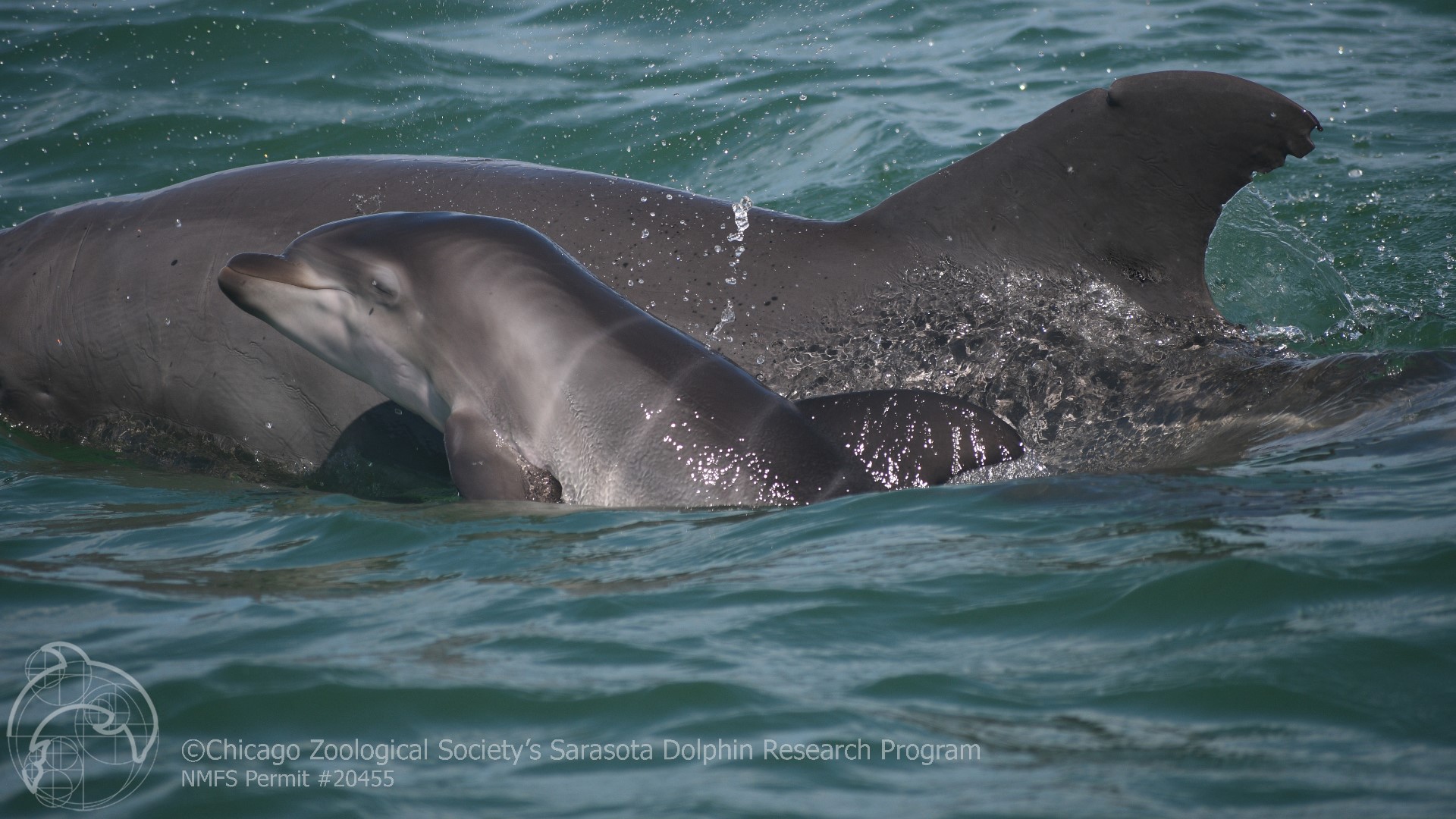SARASOTA, Fla. — In 2021, the Chicago Zoological Society's Sarasota Dolphin Research Program documented 22 dolphin births to the long-term resident bottlenose dolphin community of Sarasota Bay, a news release reports.
The number of births breaks the record set in 2017 of 21.
“It’s great to see the continuing productivity of the Bay’s dolphins, and really interesting that it was one of our older females that put us over the top,” Sarasota Dolphin Research Program Director Dr. Randy Wells said in a statement.
The older dolphin he is referring to is 44-year-old Squarenotch. Squarenotch was first observed with her new calf on Dec. 2, and it's her sixth documented calf in total, according to the organization.
The same 44-year-old dolphin was reportedly one of the 466 dolphins that Wells used as part of his Ph.D. dissertation which was completed in 1986. His studies expanded the knowledge of the dolphin community in Sarasota Bay.
Fast forward to now, the Bay's dolphins are "the focus of the world's longest-running study of a wild dolphin population."
“It’s exciting to document new calves each year as one measure of the health of the Bay’s dolphin population and the health of the Bay itself,” Wells wrote.
“But the long-term nature of our research allows us to drill deeper and consider the question of why we had a record number of births. It appears that the red tide that reached Sarasota Bay in 2018 may have played a role.”
Recently, in the past years, red tide in Sarasota Bay has resulted in the killing of marine life and millions of dollars lost from coastal economies.
According to the Chicago Zoological Society, with fewer numbers of stingrays being found in the water resulting from red tide, sharks searched for alternative prey. This shift reportedly caused sharks to see dolphins as prey which increased the disappearances of young dolphin calves during a specific time period.
The loss of the dolphin calves who are dependent on others during and following the red tide allowed more female dolphins to reproduce in 2020, which contributes to the number of births this year, Wells explained in the release.
“The record number of births is a wonderful story in itself, but thanks to our long-term data, we’re able to develop hypotheses about some of the factors that may have led to this result, which should lead to a better understanding of what can happen to an animal population when an environmental anomaly occurs,” Wells wrote.

